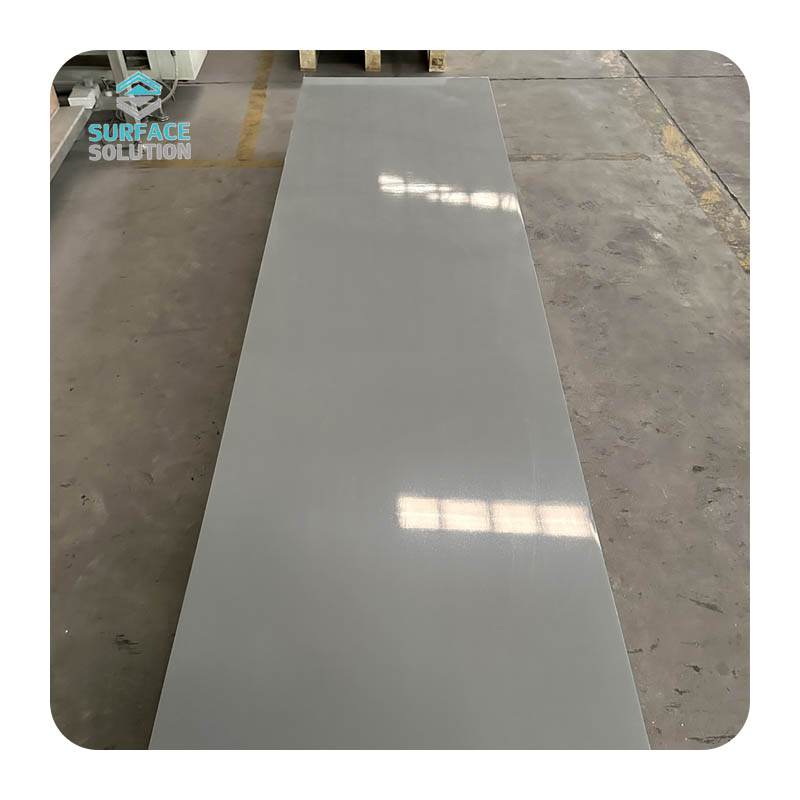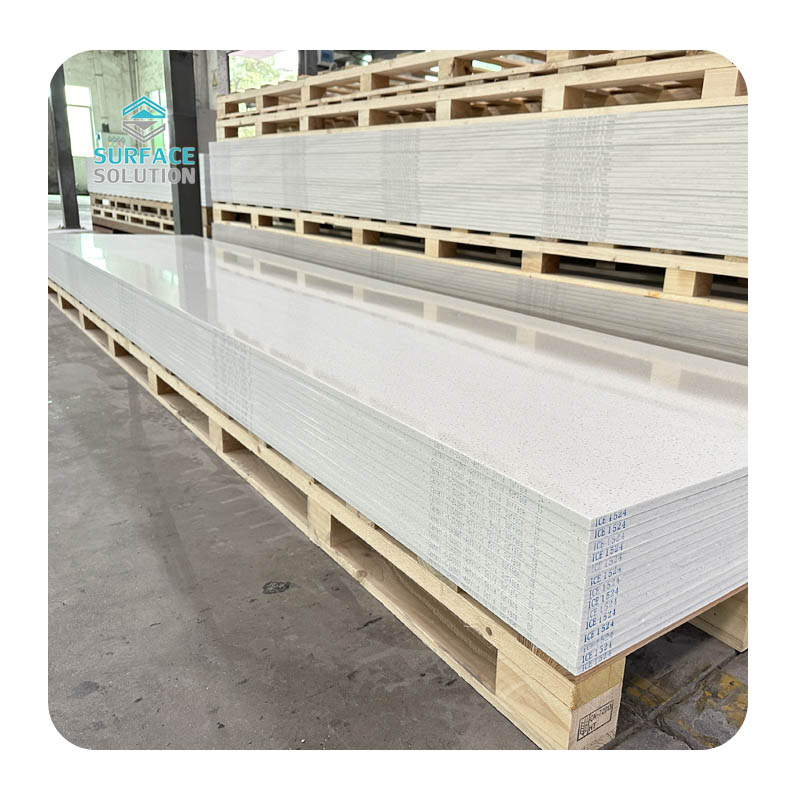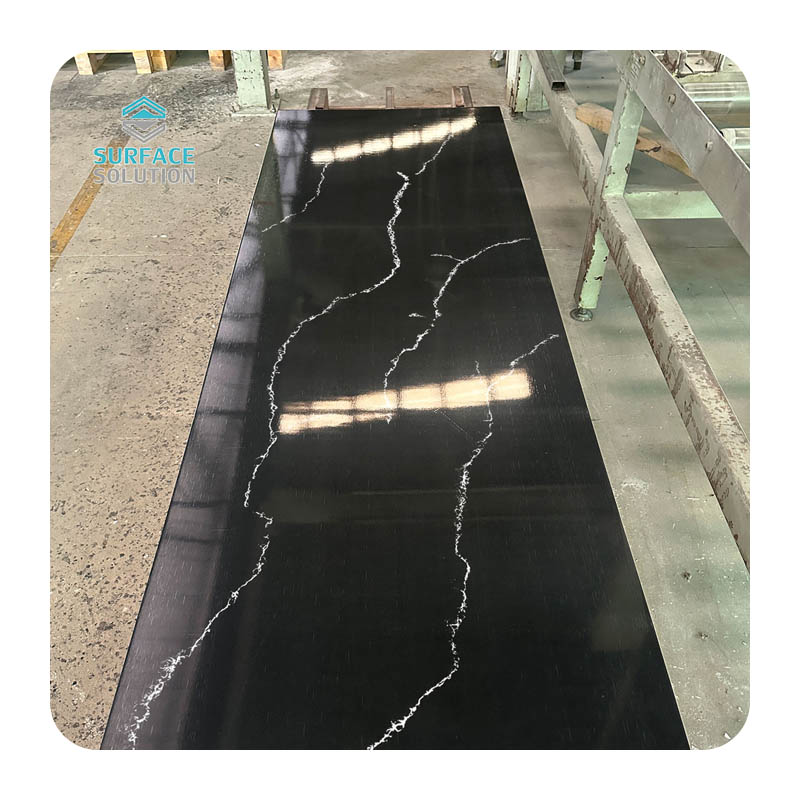In the realm of modern design and construction, materials that balance visual appeal and practicality are highly sought after.
Acrylic solid surface material, a man-made composite primarily composed of acrylic resin, aluminum hydroxide, and colorants, has emerged as a standout choice. It seamlessly merges aesthetic versatility with robust functionality, making it a favorite among designers, homeowners, and commercial space planners alike.
Acrylic solid surface material excels in meeting diverse aesthetic needs, thanks to its high customizability and visual flexibility.
Unlimited Color and Texture OptionsUnlike natural materials like marble or granite, which are limited by geological formations,
acrylic solid surface can be crafted into nearly any color—from soft pastels to bold neons, and even mimics the veining of natural stone or the texture of wood. This allows designers to match it to any interior style, whether minimalist, industrial, or rustic.
Seamless IntegrationOne of its most distinctive aesthetic features is the ability to create seamless joints. When properly installed, seams between panels are nearly invisible, forming a smooth, continuous surface. This eliminates visual breaks, giving countertops, walls, or sinks a sleek, monolithic look that enhances the sense of space.
Shape FreedomAcrylic solid surface is thermoformable—meaning it can be heated and molded into curved, rounded, or irregular shapes. This flexibility lets designers create unique pieces like curved vanity tops, integrated sinks, or custom wall panels that would be difficult or impossible with rigid materials.
Beyond its visual charm, acrylic solid surface material is engineered to withstand the demands of daily life, making it both durable and low-maintenance.
Exceptional DurabilityIt is highly resistant to scratches, impacts, and stains. Minor scratches can be easily sanded and polished away, restoring the surface to its original condition. Unlike natural stone, it does not absorb liquids, so spills (like coffee, wine, or oil) can be wiped clean without leaving permanent marks.
Hygienic and Easy to CleanThe non-porous nature of acrylic solid surface prevents the growth of bacteria, mold, and mildew—critical for spaces like kitchens, bathrooms, and healthcare facilities. Routine cleaning only requires a damp cloth and mild soap; harsh chemicals are not needed, reducing long-term maintenance effort and costs.
Long-Term StabilityIt maintains its color and shape even when exposed to UV light or temperature fluctuations (within a reasonable range). Unlike some plastics that yellow or warp over time, high-quality acrylic solid surface retains its aesthetic integrity for decades, making it a cost-effective investment.

The combination of aesthetics and functionality has made acrylic solid surface material suitable for various scenarios:
Residential Use: Kitchen countertops, bathroom vanities, shower walls, integrated sinks, and even custom furniture (like coffee tables or desk tops).
Commercial Use: Restaurant bar tops, hotel lobby reception desks, retail store display cases, and office partitions.
Specialized Spaces: Hospital operating room work surfaces, laboratory benches, and childcare center furniture—where hygiene and durability are paramount.
When pitted against common alternatives, its advantages become even clearer:
| Material | Aesthetics (Customization) | Durability (Scratch/Stain) | Hygiene (Non-porous) | Maintenance Cost |
|---|
| Acrylic Solid Surface | High (unlimited colors/shapes) | High (repairable scratches) | High (non-porous) | Low |
| Natural Marble | High (unique veining) | Low (easily stained/scratched) | Low (porous, needs sealing) | High |
| Engineered Quartz | Medium (limited textures) | High (scratch-resistant) | High (non-porous) | Medium |
| Laminate | Medium (printable designs) | Low (easily chipped) | Low (seams trap dirt) | Low |

Acrylic solid surface material is more than just a building material—it is a solution that bridges the gap between beauty and practicality. Its ability to adapt to diverse design visions, coupled with its durability, hygiene, and ease of maintenance, has solidified its position in modern design. As consumers and designers increasingly prioritize both form and function, acrylic solid surface will continue to be a go-to choice for creating spaces that are as visually stunning as they are livable.
If you need further details, I can help you compile a detailed application case list (with specific scenarios and design tips) or a material specification comparison sheet (for different brands of acrylic solid surface) to support your project planning. Would you like either of these?


 What Are Solid Surface Countertops? A Complete OverviewIn kitchen and bathroom design, solid surface countertops stand out as a versatile choice, balancing functionality, aesthetics, and durability. Unlike natural stone (granite, marble) or synthetic quartz, they offer unique benefits—but what exact
What Are Solid Surface Countertops? A Complete OverviewIn kitchen and bathroom design, solid surface countertops stand out as a versatile choice, balancing functionality, aesthetics, and durability. Unlike natural stone (granite, marble) or synthetic quartz, they offer unique benefits—but what exact A Comprehensive Guide to Cleaning Solid Surface CountertopsSolid surface countertops, such as surface solution, Staron, or Swanstone, have become a popular choice for modern kitchens and bathrooms due to their durability, seamless design, and resistance to stains. Unlike natural stone like granite or marble,
A Comprehensive Guide to Cleaning Solid Surface CountertopsSolid surface countertops, such as surface solution, Staron, or Swanstone, have become a popular choice for modern kitchens and bathrooms due to their durability, seamless design, and resistance to stains. Unlike natural stone like granite or marble, What Is Solid Surface Material? A Complete GuideIn the world of interior design and home renovation, "solid surface material" is a term frequently heard—but what exactly is it? Unlike natural materials mined from the earth or rigid synthetic alternatives, solid surface is a engineered man-made mater
What Is Solid Surface Material? A Complete GuideIn the world of interior design and home renovation, "solid surface material" is a term frequently heard—but what exactly is it? Unlike natural materials mined from the earth or rigid synthetic alternatives, solid surface is a engineered man-made mater What Are Solid Surface Countertops Made Of? A Comprehensive BreakdownSolid surface countertops have become a popular choice in modern kitchens and bathrooms, celebrated for their seamless appearance, durability, and versatility. Unlike natural stone (such as granite or marble) or ceramic tiles, soli
What Are Solid Surface Countertops Made Of? A Comprehensive BreakdownSolid surface countertops have become a popular choice in modern kitchens and bathrooms, celebrated for their seamless appearance, durability, and versatility. Unlike natural stone (such as granite or marble) or ceramic tiles, soli



















